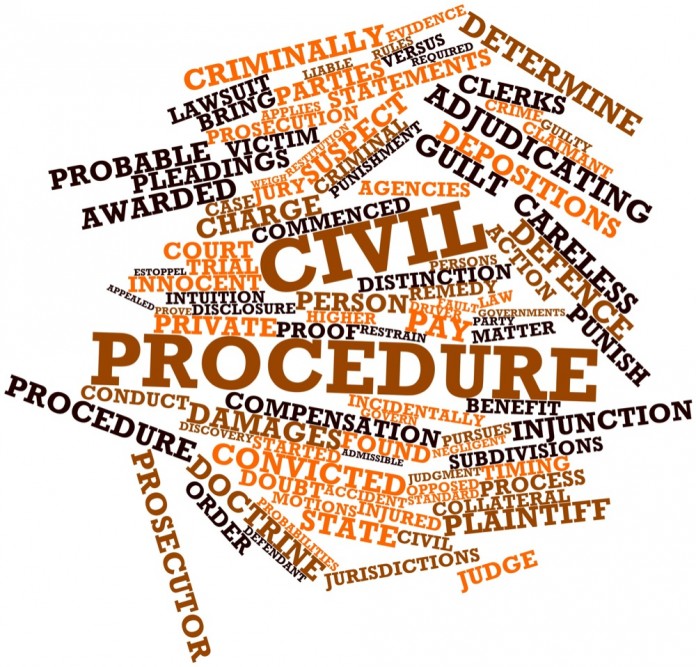In this blog post, Deepak Sati, a student pursuing a Diploma in Entrepreneurship Administration and Business Laws from NUJS, Kolkata, compares and analyses Section 80 of CPC and ADR techniques.
Introduction
Generally, in suits between individuals and individuals notice to defendants by plaintiff before institution of suit is not required to be given. However, section 80 of the Civil Procedure Code (CPC) says that before institution of a suit against the government or against any public officer, in respect of any act purporting to be done by such public officer in his official capacity, until the expiration of two months next after the notice in writing has been delivered.
Nature of Section 80:
Section 80 contains a rule of procedure and makes it mandatory to serve a notice before institution of a suit against the Government or against a public officer.
Thus, this section describes two types of cases:
- Suit against the Government and
- Suit against public officers in respect of acts done or purporting to be done by such public officers in their official capacity.
In State of Maharashtra v. Chander Kant1 it was observed that notice must be given in all cases regarding the first class of cases. However, regarding second class cases, notice is necessary only where the suit is in respect of any act purporting to be done by such public officer in the discharge of his duty, and not otherwise.
In State of Madras v. Chitturi Venkata Durga Parasadrao 2 it was observed that the expression act purporting to be done according to one interpretation which is strictly grammatical, takes in part acts as well as future acts. The other interpretation based upon an idiomatic interpretation of the language is that it would be restricted to part acts.
Object of the notice:
Underlying object of section 80 is to provide an opportunity to the Government or public officer to consider the legal position and to settle the claim forwarded by the prospective plaintiff if it appears to be just and proper. It is expected from the government unlike private parties to consider the matter objectively and make an appropriate decision in two months after obtaining proper legal advice. It saves public money and time and is in public interest.
The legislative intent behind this provision is that public money not be wasted for unnecessary litigation. The section guides the Government or a public officer to negotiate just claims and to settle them if well‐founded without adopting an unreasonable attitude by inflicting wasteful expenditure on public exchequer.
Opinion of the Law Commission:
In its 14th report, Law Commission of India noted that section 80 has worked hardship in a large number of cases where immediate relief was needed. In large number of cases, the Government or the public officer made no use of opportunity afforded by the section; Government and public officers utilised the provision as a technical defence and notice remained unanswered.
In 27th report the commission again considered the question and observed that there was no parallel provision in any other country governed by the Anglo‑Saxon system of law. It further said that in democratic country like ours there should ordinarily be no distinction as envisaged by section 80 between the citizen and the State.
ADR (Alternative Dispute Resolution)
The term ADR has been used to represent various systems that attempt to resolve dispute through methods other than litigation in courts. It covers a broad spectrum of approaches, from party to party engagement in negotiations as the most direct way to reach a mutually accepted resolution, to arbitration and adjudication at the other end, where an external party imposes a solution.
The Arbitration and Conciliation Act, 1996 granted statutory recognition to ADR. The Act facilitate the parties to resolve disputes either through conciliation or the Award of the Arbitrator is a deemed decree. The Lok Adalats organized under the Legal Service Authorities Act, 1987, facilitate settlement between the parties.
Nature of ADR:
ADR is based on more direct participation by the disputants rather than being run by lawyers and judges, Most ADR processes are based on an integrative approach. They are more co‐operative and less competitive in comparison to adversarial court based litigation. ADR proceedings are private and confidential. ADR is perceived both as a preventive measure and as a method for channelizing disputes outside the formal justice system.
An ADR system combines various adjudicatory procedures such as arbitration and binding expert determination. The non‐adjudicatory procedure such as conciliation, negotiation, and judicial settlement include through Lok Adalat and mediation which contribute to resolution of disputes by agreement of the parties without adjudication.
Objective of ADR:
The ADR system seeks to provide cheap, simple, quick and accessible justice. There are four important goals of ADR:
- To relieve court congestion as well as undue cost and delay;
- To enhance community involvement in the dispute resolution process;
- To facilitate access to justice; and
- To provide more effective dispute resolution.
Application of ADR to disputes:
ADR mechanism is extra‐judicial in character. It can be used in almost all contentious matters which are capable of being resolved, under law, by agreement between the parties. In Afcons Infrastructure Ltd. v. Cherian Varkey Construction Co.Ltd. ,3 the Supreme Court held that the following categories of cases can be settled through ADR process‐
- All cases relating to trade, commerce and contracts;
- All cases arising from strained or soured relationships;
- All cases where there is need for continuation of the pre‐existing relationship in spite of the disputes;
- All case relating to tortuous liability;
- All consumer disputes;
- All offences which are compoundable.
Citations:
- (1977) 1 SCC 257
- AIR 1957 AP 675
- (2010) 8 SCC 24
 Serato DJ Crack 2025Serato DJ PRO Crack
Serato DJ Crack 2025Serato DJ PRO Crack









 Allow notifications
Allow notifications


